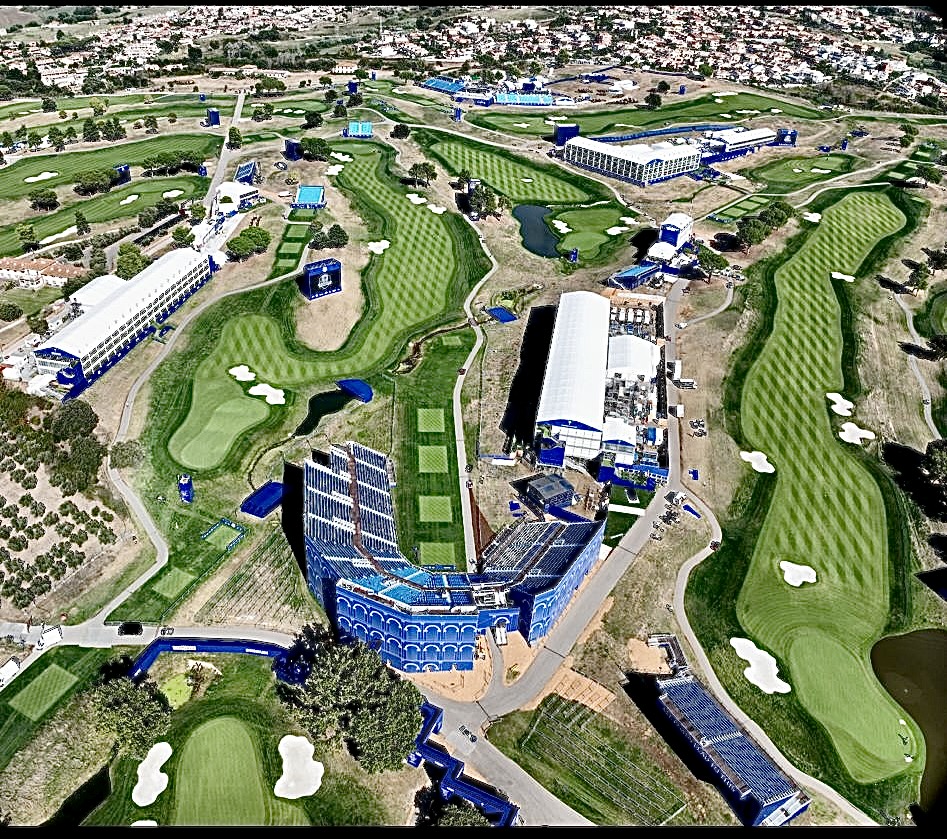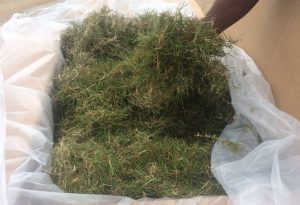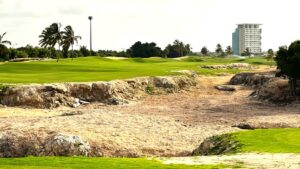Agronomist Reveals the Discernment Process at Marco Simone
By the time the teams reach the first tee of Marco Simone Golf & Country Club, a million decisions have been agonized over to perfect every element of golf’s quintessential rivalry. The level of detail that goes into every facet of Ryder Cup preparation was not spared when it came time to select turfgrasses for the redesign of Rome’s host golf course. Deputy Director of Tour Agronomy for the DP World Tour Graeme MacNiven provides insight into the selection process.
Which entities had input on the turfgrass selection for the 2023 Ryder Cup?
MacNiven: We drew from a wide field of expertise. The grassing specs were discussed at the onset of the project between several parties, including members of the architect team at European Golf Design Ltd., Ryder Cup Europe representatives supported by the DP World Tour Agronomy Department, of which I am part, as well as the original Marco Simone Golf & Country Club construction and grow-in superintendent.
What attributes were considered when selecting the greens turfgrass?
MacNiven: Expectations were naturally high when the requirements were set for the greens grass species. We were searching for a fine-leaved bentgrass with upright growth, deep rooting, heat tolerance and good disease resistance, in particular against Dollar Spot and Rhizoctonia. This led to the decision to go with ‘Pure Distinction’ bentgrass.
Pure Distinction fulfils all the above criteria, allowing us to present world-class quality putting surfaces without the associated stress of inflicting a low height of cut as is often necessary with other cultivars. While there are plenty of bentgrasses to choose from, Pure Distinction outperformed all the other suggested candidates in NTEP trials.
The tees, approaches, run-offs, fairways and semi-rough are all grassed with one variety. How was that selection made?
MacNiven: We selected a seeded seashore paspalum variety, Pure Dynasty, for all of these areas. Because Pure Dynasty can be utilised throughout a wide range of mowing heights – greens to rough, it gives the designer – and those responsible for setting up the golf course – an enormous amount of flexibility and freedom in what they do. For example, the fairways in Marco Simone have been maintained season long at a 7mm height of cut, with approaches and run-offs typically mown at 6mm, ensuring a stray golf ball does in fact ‘run-off’ down the slope, such a ‘height of cut scenario’ that would not be possible with other available warm-season grasses.
In a nutshell, Pure Dynasty Seashore Paspalum allows us to create a closely mown uniform sward of quality turfgrass that can be presented in peak condition at the end of September after a potentially gruelingly hot summer.

Did sustainability factor into the decision-making process?
MacNiven: Absolutely. Paspalum offers significant advantages in the area of sustainability. To name a few:
- Pure Dynasty is seen as an environmentally aware choice, given it requires substantially less water and nutrients post-establishment than the main alternative grass types. The fact that Marco Simone draws its irrigation water from a very modest supply – via a small stream – is a very big part of this equation. This selection is particularly relevant when you consider the above playing surfaces – close to 20ha, including practice facilities – make up the largest area of any single turf species on the golf course.
- Paspalum can adapt better than any other warm season grass to challenging growing conditions such as poor water quality, heavy soils, and low light conditions.
- Paspalum has more than twice the root mass of the warm season alternatives. Its enhanced root-system allows for a considerably more efficient uptake of nutrients, thus minimising nitrogen and phosphorus leaching into the soil and nearby bodies of water.
What are the aesthetic advantages of the paspalum?
MacNiven: Paspalum is genetically positioned between the warm season and cool season grass species, displaying a brighter, fresher texture and colour, which lends itself to variable methods of presentation such as intense striping or one-directional mowing without any great occurrences of visual grain, attributes other warm-season turfgrasses lack. This, you will understand, is a major factor in presenting a Ryder Cup-quality golf course.
Appearances aside, what about playability and durability?
MacNiven: On account of the same bright colour and texture, Pure Dynasty both looks and plays similarly to typical European cool-season turfgrasses. Pure Dynasty has an upright growth habit, withstands cart traffic and turning mowers well; it also recovers rapidly from injury, for example, divots.
As we witnessed at the end of April during the tournament run-in week at this year’s Open d’Italia, paspalum is early to green-up in the spring – if the proper nutrient balance has been applied the previous autumn – and holds its colour well into the autumn period.
Since paspalum has had a shorter history of use in golf applications than other species, such as bentgrass or bermuda, did you seek outside counsel?
MacNiven: Before and during construction & grow-in, conversations and discussions were conducted with Dr. Ronnie Duncan, noted plant breeder and paspalum expert, to ensure that all methods and nutrient applications were in line with Dr. Duncan’s recommendations and philosophies.
Furthermore, the Ryder Cup Europe Agronomy Team were collectively in a strong position to share their seashore paspalum expertise with the original golf course grow-in and maintenance Superintendent from their considerable experience gained working on numerous seashore paspalum courses – mainly in the Middle East and Asia – on our DP World Tour calendar, a sharing process that continued when a new golf course superintendent was appointed some three-quarters way construction.

What about the maintained rough and second-cut areas?
MacNiven: One of our main considerations in this department is almost unique to tournament golf. A healthy, strong, thick stand of turfgrass is always requested by Ryder Cup Captains and those involved in the golf course setup. In recent European-hosted Ryder Cups, thick ryegrass-based swards have been the norm. Warm season grasses do not provide us with the desired degree of density and uniformity within a 100mm (4”) tall sward of grass, so overseeding would naturally be called upon. There are several reasons why this idea is a non-starter for this year’s Ryder Cup in Rome: Given that the overseed would need to be at least six weeks old to form a mature sward, that would mean we would be overseeding at the beginning of August, the hottest part of the Roman summer, with temperatures around 40 degrees Celsius.
The amount of irrigation water that would be required to keep ryegrass seedlings alive at this time of year would be astronomical. The club would certainly not have that much water at their disposal and even if they did, the effect of overwatering the neighbouring fairway turf with that amount and frequency of water would be disastrous. Surface quality would suffer dramatically, with the loss of density and firmness, mowers would be damaging the playing surfaces when mowing – especially around gulley-pots – and disease, for which we have no registered chemicals, would be rife.
As a solution, we turned to a deep-rooted, drought-resistant cool season turfgrass, which, with sufficient TLC throughout the summer, would provide us with the desired conditions: Tall Fescue.
In the end, it all comes down to performance. What have been the reactions?
I think Zach Johnson summed it up well when he said in the interviews after Day One: “I think the course is beyond worthy of a championship of this magnitude.”
And finally, who do you think will win the 2023 Ryder Cup?
MacNiven: That’s an easy one – the golf course!



